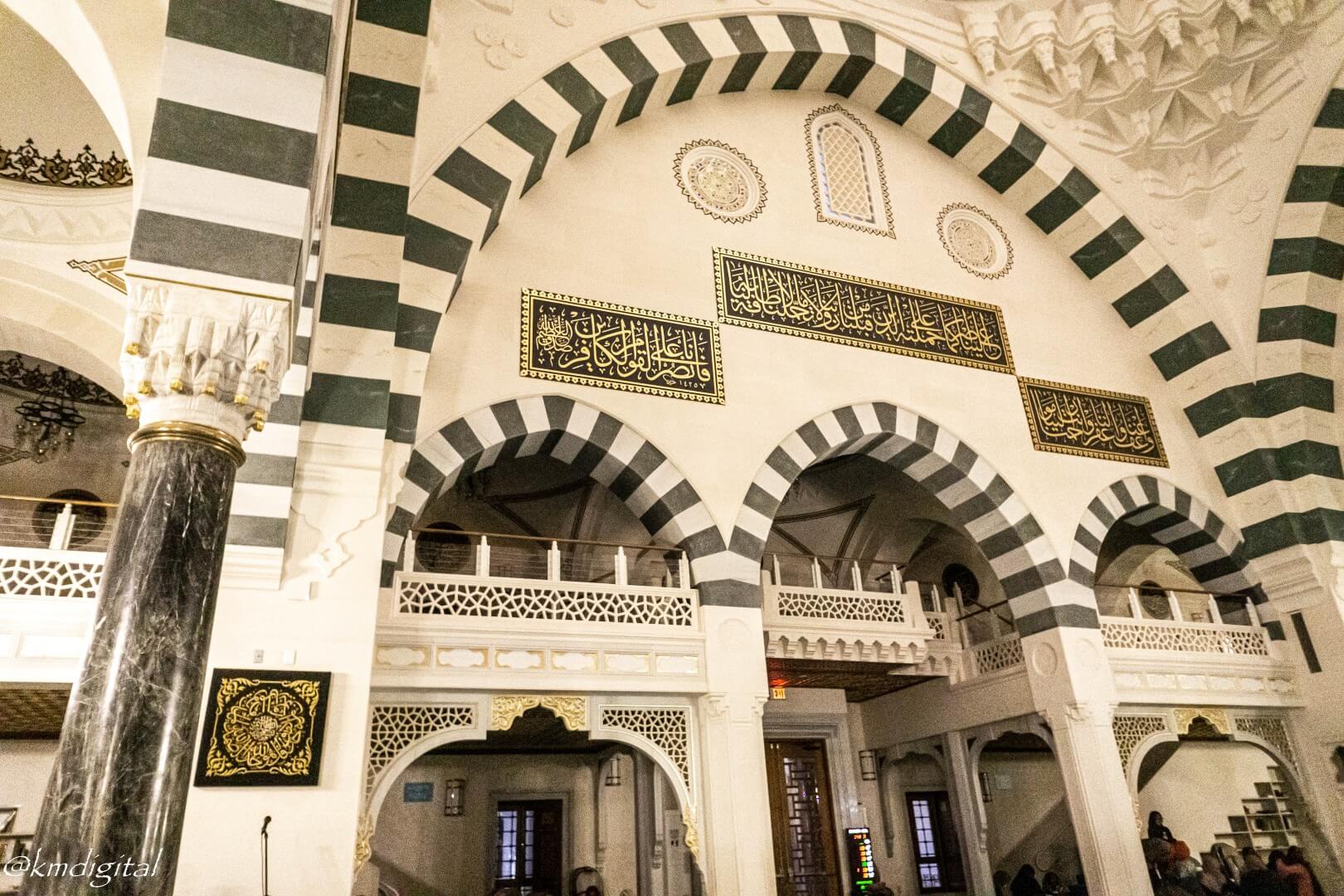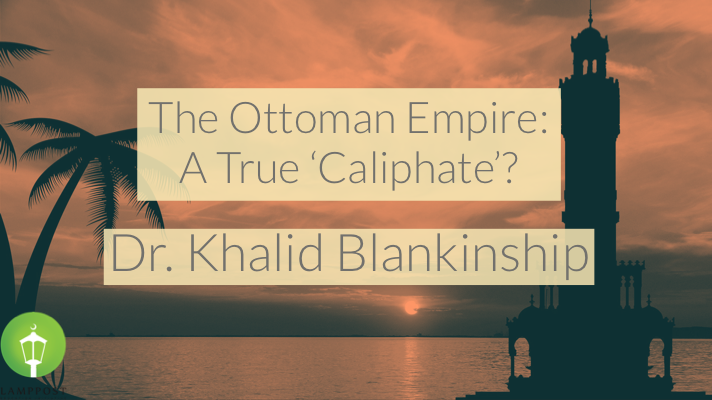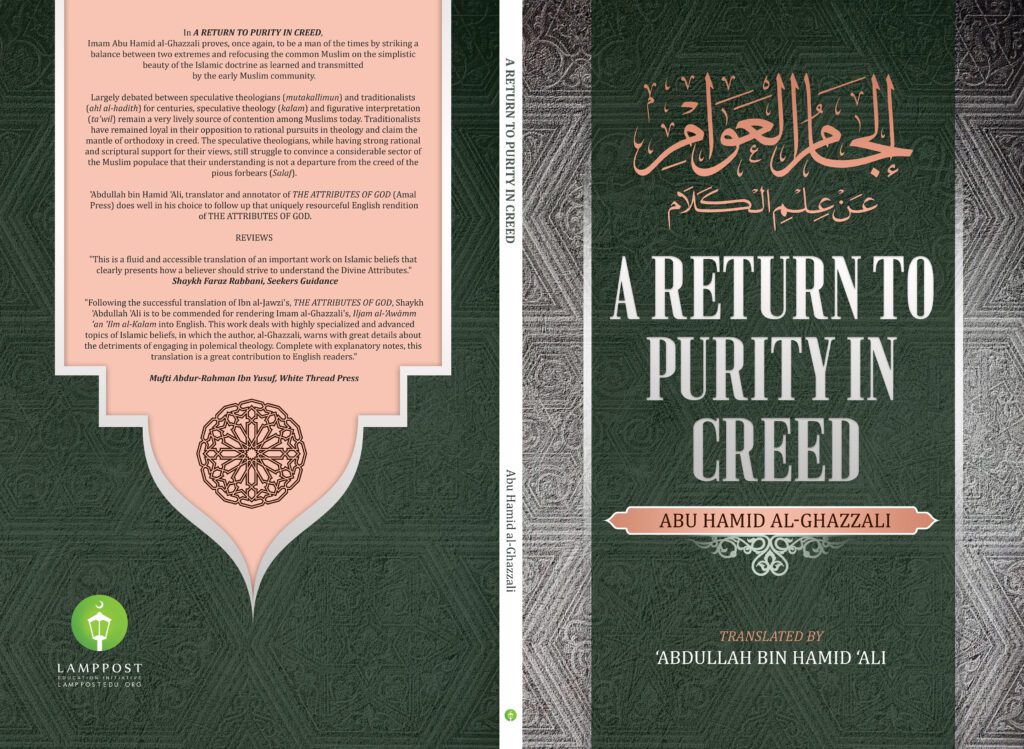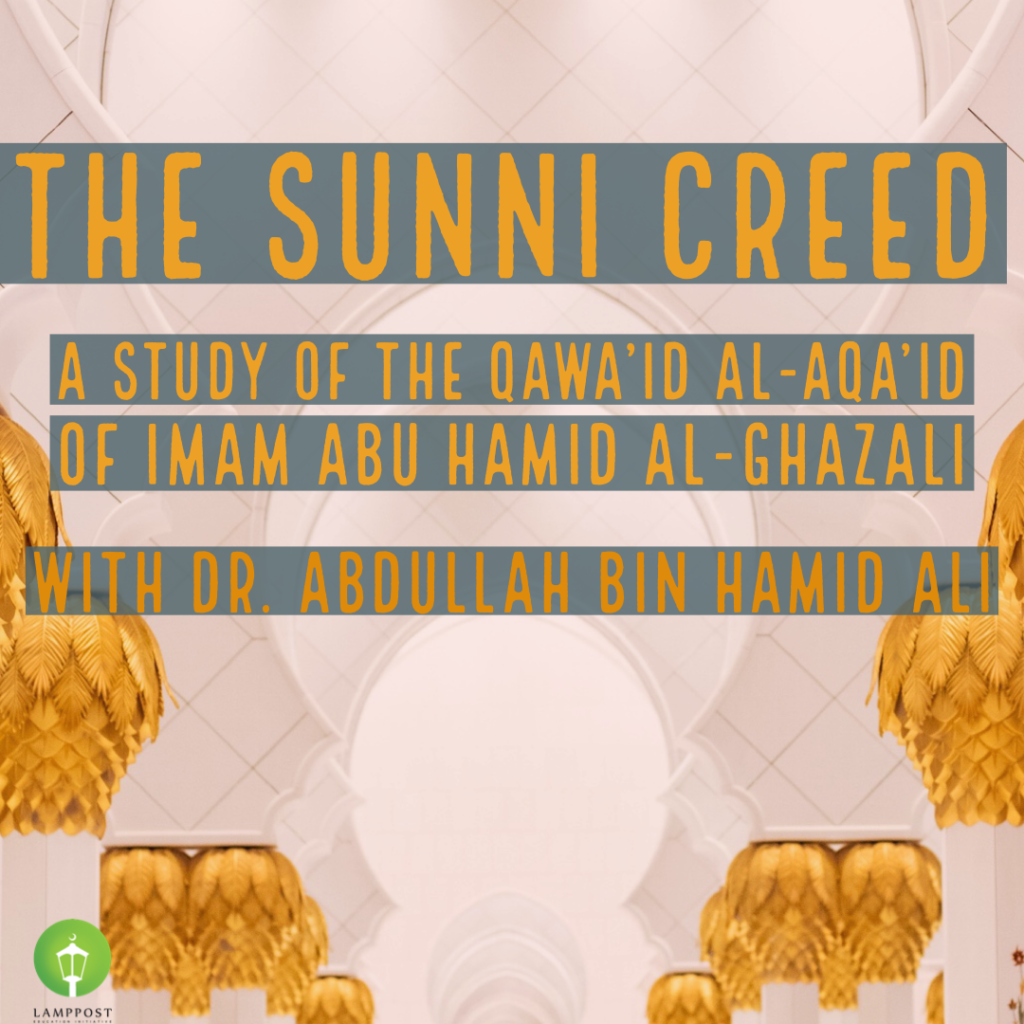Question: Didn’t the Muslim caliphate or khilafah end in 1342 AH/1924 CE, when Turkey abolished the office? Didn’t the khilafah have a continuous existence up to that point?
Answer by Dr. Khalid Blankinship:
These questions are two-sided, as they deal with fiqh and with history. The fiqh of the khilafah is important, and perhaps that can be dealt with in a future article. In this article, however, I will be exclusively concerned with the history. In revealing historical facts, it is not my purpose to challenge any point of fiqh regarding the necessity of having a leader. Therefore, I am not disputing here that from the time of the death of the Prophet (SAAS) there was an amir, and that the amir had to be obeyed, and that the amir also had the title of khalifah. Most of what I would amend concentrates on the idea that the khilafah was abolished in 1342/1924, which is an event whose significance has often been misconstrued by Muslims.
The early khilafah had a more or less continuous history from Abu Bakr (RA), despite the civil wars of 35-40/656-661 and 64-73/683-692, until the coup that overthrew al-Walid ibn Abd al-Malik in 126/744. That led to the Third Fitnah or Civil War (126-134/744-752), during which the Abbasids came to power in 132/749-750. This history is detailed in my book, The End of the Jihad State: The Reign of Hisham ibn Abd al-Malik and the Collapse of the Umayyads, available from SUNY Press.
Contrary to most popular belief, the Abbasid’s position was weak, not strong, because the disorders of the Third Fitnah had undermined the khilafah. The Abbasids never ruled in Algeria (except briefly in the extreme east of that country), Morocco, and Spain, so that the unity of the state had decisively ended. This actually first happened when the rebelling Berbers of Morocco set up their own khilafah in 122/740, and it never happened after that year that all the Muslims ever were under one single khalifah again. Although it has been mentioned that the Umayyads in Spain did not claim the title of khalifah until the 4th/10th century, they were in a constant state of hostile relations with the Abbasids, who never ruled or even exerted any influence in Spain.
The North African Berbers, whose revolt had actually broken the back of the earlier Umayyad khilafah in 122/740, had plenty of justification for their revolt, and it is really unfair merely to treat them as followers of a deviant sect of Khawarij, as has often been done. Even though their presence gave rise to the separate sect or madhhab of the Ibadis who still exist in the Algerian city of Ghardayah and also in villages in Jabal Nafasah in Libya, their initial impetus was purely political. All they did was to rebel against an Umayyad khilafah which had lost all legitimacy except among the Syrians and which soon collapsed and disappeared. Remember that Sunnis have historically never validated the rule of the khalifahs apart from the four Rashidun and, often, Umar ibnAbd al-Aziz (99-101/717-720). While Mu’awiyah occurs in hadith and might be defended as a Companion, that does not apply to the later Umayyad rulers. Abd al-Malik ibn Marwan’s viceroy of the East, al-Hajjaj ibn Yusuf (d. 95/714), even executed Sa’id ibn Jubayr (d. 95/714), the great muhaddith and authority of al-Bukhari and other hadith collections, sarcastically berating him for having thrown off his oath of allegiance by joining the ill-fated rebellion of Ibn al-Ash’ath much earlier and then hiding out. This episode is documented in detail by al-Dhahabi in his huge biographical dictionary, Siyar a’lam al-nubala’, Vol. IV.
From the time of its first proclamation in 132/749, the Abbasid khilafah continued to disintegrate through most of its history. It is quite notable that Abu Hanifah (80-150/699-767), the putative founder of the Hanafi legal school and an outstanding jurist of the Muslim metropolis of al-Kufah, after he had supported the Alid rebel Muhammad al-Nafs al-Zakiyyah, spent the last four and a half years of his life (145-150/763-767) in the prison of Abu Ja’far al-Mansur (ruled 136-158/754-775), the Abbasid khalifah. Indeed, Abu Hanifah was imprisoned in Baghdad in the very year of the founding of that city and thus broke in the new prison. Further undermining the claim of the Abbasids to universal rule, a separate Fatimid Shi’i khilafah was set up that lasted 297-567/909-1171 in North Africa and Egypt, and the surviving Umayyads in Spain also claimed the title of khalifah 317-422/929-1031, when they fell. After that, many small princelings in Spain and North Africa claimed to be khalifahs, so that a poet stated that they would take up big names like al-Mu’tasim, just like housecats pretending to be lions.

Special Online Courses and Seminars. Listen to some of the samples for these courses. Click the link below.
The Hafsid dynasty of Tunis claimed the title of khalifah 651-977/1253-1569 and adopted Abbasid-sounding reign titles. When Islam spread to West Africa, so did claims to the office of khalifah or amir al-mu’minin. This became part of the titles of Uthman ibn Fudi (or dan Fodio) of Sokoto and his successors in Nigeria to this day. Since the khilafah of the Ottomans was remote and made little pretense of being a real office, Uthmân ibn Fudi ignored it. The continuity of the use of such titles in the Muslim West also extends down to the present in Morocco, where Muhammad VI is still to this day amir al-mu’minin, just like ˜Umar ibn al-Khattab, and that is taken with deadly seriousness in Morocco. Thus, the Moroccans, having their own continuous succession of the title, do not at all now and never before did recognize the Ottoman Turkish sultans’s claim to the title of khalifah. Indeed, since the sultans of Morocco claimed descent from the Prophet (SAAS) and were thus Qurashis, while the Ottomans were not, it might be held against the Ottomans rather that they did not recognize the Moroccan ruler as khalifah and submit to him.
Meanwhile, in the East, the Abbasid khalifahs exercised no personal power in 247-279/861-892 and again 295-334/908-945, when they were under the control of military dictators, and then lost all power completely with the capture of Baghdad in 334/945 by the Shi’i Buyids or Buwayhiyyun, who kept the Abbasid khalifahs under house arrest until the Buyids’s own downfall in 447/1055, when the Sunni Saljuq Turks came as liberators. However, the Abbasid khalifahs soon found that the Saljuqs were just as intolerable and would allow the khalifahs no power, although they respected them, for example, by seeking to marry their daughters. The Saljuks arrogated to themselves the title of sultan or authority, which henceforth became the main title of the rulers in Islam until the last century, when malik or king began to make a comeback. The Abbasid khalifahs only became independent again from the Saljuk sultans in 547-656/1152-1258, after which Baghdad was captured and destroyed by the kafir Mongols and the last Abbasid khalifah was slain. The Egyptian Mamluks set up one of his relatives, but he too was killed by the Mongols trying to go back to Baghdad. After that, they set up a distant relative in Cairo in 659/1261 as khalifah, and that line continued until the death of the last one in 950/1543.
This was the so-called Abbasid khilafah in Cairo. Although the very far away Muslim Sultanate of Delhi in India used to seek investiture from them, everyone else regarded them as a joke. Usually the Mamluk sultan would go out and drag the khalifah along in his baggage just like one of his wives. It was form without content
At the same time, the Turks of Turkey used the titles of amir al-mu’minin and khalifah occasionally before 905/1500, but their real title was sultan, just like the Saljuks, Ayyubids, and Mamluks before them. After that the title khalifah was not used by them for several centuries, until it was rediscovered at the Treaty of Kuchuk Kanarjli in 1188/1774. At that time, in that treaty with the Russians, the Turkish sultan reserved the title of khalifah for himself so that he could still be considered the spiritual leader of the Crimean Tatar Muslims who were surrendered at that time to the Russians. Thereafter, it was used very little except from 1293/1876, when the Ottoman ruler Abd al-Hamid II started calling himself the Sultan-khalifah in order to threaten the British Empire and thus preserve his rule. In this he was strongly opposed by Abd al-Rahman al-Kawakibi (d. 1321/1903), who pointed out that according to Sunni law, the khalifah had to be from Quraysh, and the Ottomans were not Qurashis and had never claimed to be.
Long after Abd al-Hamid was overthrown in 1326-1327/1908-1909, many Muslims started looking back on him as the ideal ruler and his time as the golden age, because his overthrow practically meant the end of the multinational Ottoman Turkish state, but they did not think so at the time. His successors Muhammad V Rashid (1327-1336/1909-1918) and Muhammad VI Wahid al-Din (1336-1341/1918-1922) continued to use the title, but they were under the control of military dictators. When Muhammad VI surrendered to the British in 1337/1918, he fell under the control of those colonialists, and none mourned his expulsion by the military dictator Mustafa Kamal in 1341/1922. Thereafter for two years, Muhammad VI’s cousin Abd al-Majid II had the title of khalifah without being sultan, until that was terminated by Kamal in 1342/1924. That was the end of one khilafah, but hardly the end of THE khilafah, because there was nothing legitimate about the Ottoman claim to be khalifahs to begin with.
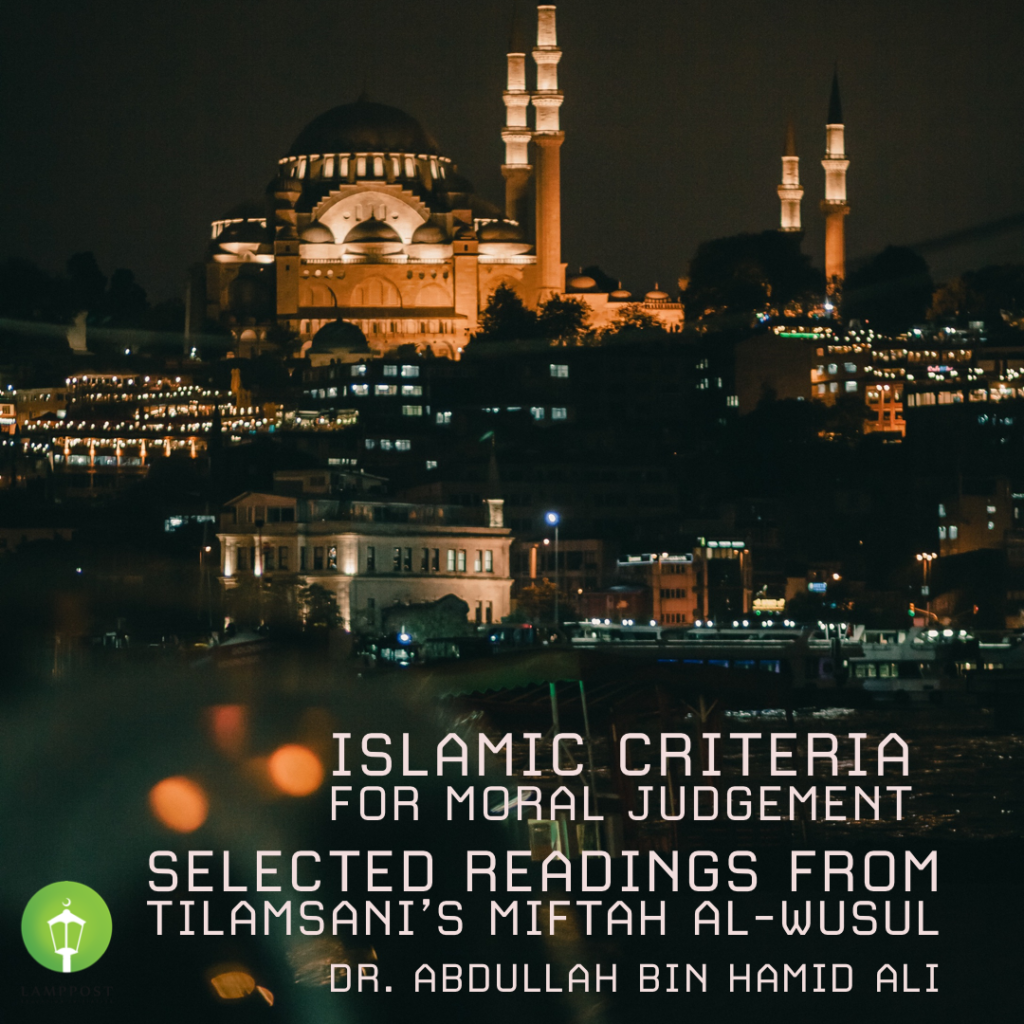
A detailed online introductory course to the science of usul ul-fiqh. Listen to a sample of the course by clicking the link below.
After that, various rulers tried to claim to be khalifah, including the British puppet kings of Egypt and the Hashimite ex-king of the Hijaz, but no agreeable candidate appeared. The Sa’idi rulers never tried to claim it, maybe because they had fought the Ottoman Turks on and off for nearly two centuries and did not respect their claim to the title, so they did not see that any legitimate title had become vacant.
It would seem to me that any attempt to restore the khilafah today would have to begin by asking why all Muslims should not swear allegiance to King Muhammad VI of Morocco, who certainly holds this claim and does so through an ancient and venerable lineage that goes back much earlier than the Ottoman claim and is much more authentic. Not that I hold the view that that is what is to be done, but it would seem that classical theory would require allegiance to the existing khalifah rather than setting up another as rival. The Ottoman state did represent the largest surviving Muslim state in the center of the Muslim world in the thirteenth-fourteenth/nineteenth century, it is true, but it almost went under in 1247-1256/1831-1840 and was only saved by British intervention
Thus, for most of its last century it did not constitute a truly independent Muslim polity but depended on Britain for protection from Russia and from other enemies. Indeed, its destruction after the First World War occurred because it had transferred its political allegiance to Germany, so that Britain no longer wished to preserve it.
Besides these difficulties with idealizing the Ottoman state, there are other problems. The centralizing organization of that state made the religious scholars very subservient, thereby undermining their traditional role as defenders of the people. Ottoman statism cynically used Islam in the thirteenth/nineteenth and early fourteenth/twentieth centuries, not cultivating real spiritual and moral values and already capitulating to the West. Thus, Mustafa Kamal, the secularist military dictator, represented more a continuation of Ottoman statism than a revolution against the Ottoman state model. Even if we go back to Muhammad II al-Fatih (855-886/1451-1481) and Sulayman I al-Qanuni (926-974/1520-1566), we find the statist model in full operation. Nor is its derivation even wholly Muslim; in many of its forms and especially its content, it goes straight back to the defunct, authoritarian Roman Empire which it replaced in 857/1453.
Of course, there is also some virtue in the Ottoman state as an example of possible Muslim political arrangements, but it can hardly be considered to accord with the classical shar’i model of a Muslim state, nor can it be wholly defended on moral grounds. It is better to be circumspect about such matters.
The idealization of Sultan Abd al-Hamid II is also a dubious exercise. While I agree that he has been overly abused by European colonialist writers, his rule, although sometimes clever, was not ideal in an Islamic sense at all. It was rather filled with compromises and a huge intrusion of European influence, including a bankruptcy similar to Egypt’s meltdown of 1293/1876. Most modern defenders of Muslim statism would not have liked Abd al-Hamid’s conservative dependence on the Sufi shaykh Abu al-Huda al-Sayyidi, nor perhaps his personal character, nor would they have been content to live under his rule without protest.
Finally, one should note that it is not usually wise to take a partisan position about every episode in past history, as we were not there, did not experience it, and do not know the details to weigh who was more in the right in the majority of cases. It is true that we have set views received from our tradition regarding respect for the Prophets (AS), in particular our Prophet Muhammad (SAAS), as well as his Companions (RAA), especially the Rightly-guided Khalifahs or Rashidun. And even after them one may make some historical criticisms and judgements after careful study. But in most cases it is better to invoke and obey the command of the Prophet (SAAS) in the sahih hadith from al-Bukhari, la tasubbu al-amwat, fa-innahum afdaw ila ma qaddamu = Do not curse the dead, for they have gone to the reward of what they did (See al-Bukhari, Sahih, translated by Muhammad Muhsin Khan, Vol. 2, p. 270, hadith 476 (kitab al-jana’iz, bab ma yunha min sabb al-amwat), and Vol. 8, p. 344, hadith 523 (kitab al-riqq, bab sakarat al-mawt); also reported by al-Nasa’i, Ahmad ibn Hanbal, and al-Darimi).
Dr. Khalid Yahya Blankinship
Born in Seattle, WA, Khalid Yahya Blankinship obtained his BA in History in 1973 from the University of Washington, an MA in Teaching English as a Foreign Language in 1975 from the American University in Cairo, and an MA in Islamic History in 1983 from Cairo University. His Ph.D. in History is from the University of Washington in 1988.
After traveling extensively in Europe and the Middle East, Blankinship long resided in Egypt and in Saudi Arabia at Makkah, becoming fluent in both classical and colloquial Arabic. He taught English for several years at 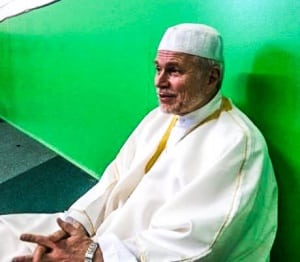 the American University in Cairo, and then History at the University of Washington. In 1990, Blankinship moved to Philadelphia, where he was appointed in the Department of Religion at Temple University. Promoted to the rank of Associate Professor in 1996, he has served as Chair of the Department of Religion 1998-2002, Departmental Graduate Director 2003-2013, and Chair again from 2013. He is active in lecturing and research on religion in general and Islam in particular.
the American University in Cairo, and then History at the University of Washington. In 1990, Blankinship moved to Philadelphia, where he was appointed in the Department of Religion at Temple University. Promoted to the rank of Associate Professor in 1996, he has served as Chair of the Department of Religion 1998-2002, Departmental Graduate Director 2003-2013, and Chair again from 2013. He is active in lecturing and research on religion in general and Islam in particular.
In addition to courses on Islam, he regularly teaches Religion in the World as well as Religion and Science. He has regularly presented papers at the annual meetings of the American Academy of Religion (AAR) and the American Oriental Society (AOS), and has also participated in meetings of the Middle East Studies Association (MESA). He has delivered lectures in many places, including Morocco, Saudi Arabia, Jordan, Egypt, India, and Malaysia. Also, Blankinship studied with a number of Muslim religious scholars, especially Shaykh Ismâ‘îl Sâdiq al-‘Adawî (1934-1998), the Imâm of Masjid al-Azhar in Cairo, and he has made the acquaintance of many well-known scholars of the Muslim world. He has posted a number of his responses to questions on Muslim law (on-line). He participated in the series of religious lectures in the Arabic language called al-Durûs al-Hasaniyyah (Hasanian Lectures) presented before the king in Morocco during Ramadân 1989-2000.Dr. Khalid Blankinship is a regular contributor to the Lamppost Education Initiative. We are pleased to announce that we have published a new book by Dr.Blankinship. ‘Murshid Al-Qari’-A Reader’s Guide to Classical Muslim Religious Literature in English’ is a unique work that explores the English translations of the Qur’an and Tafsirs.

